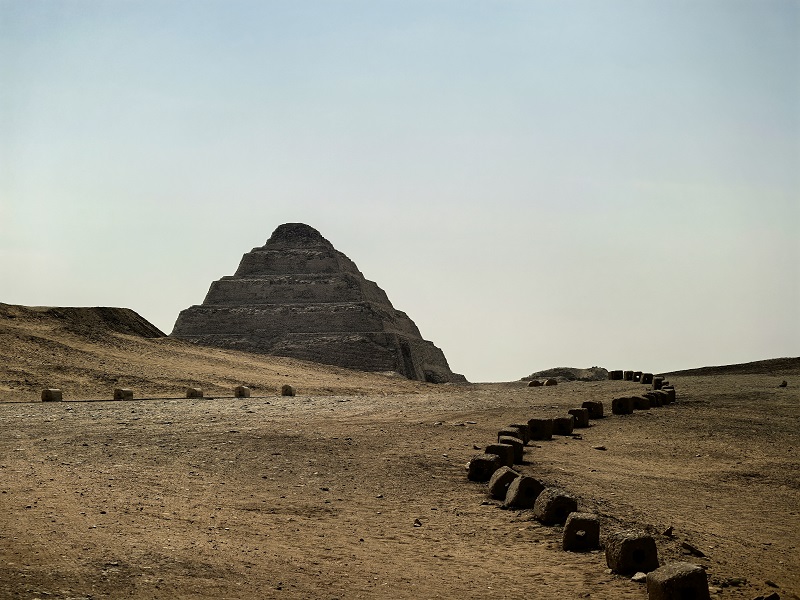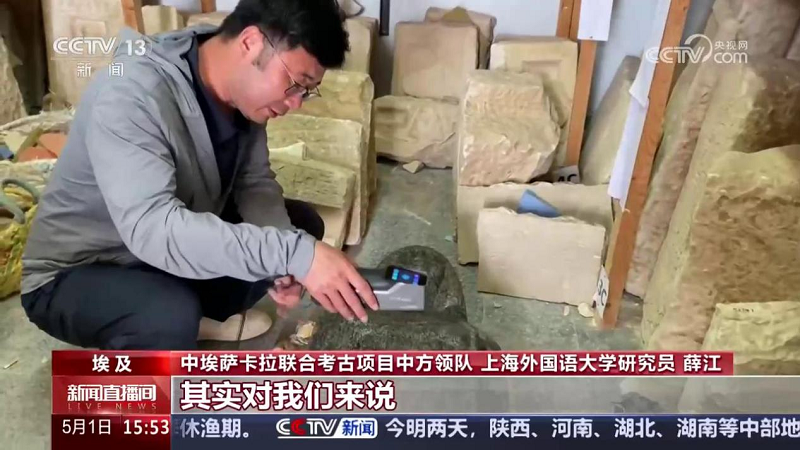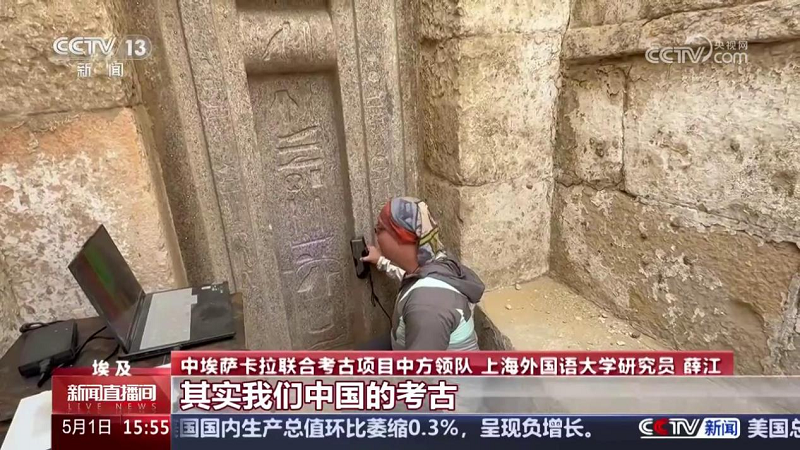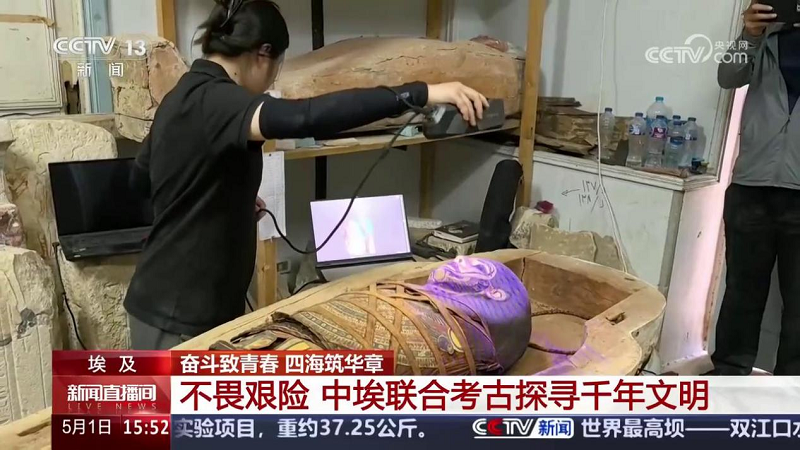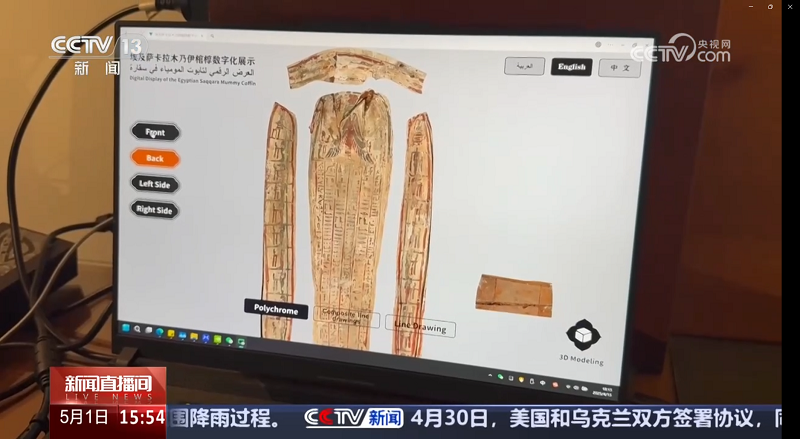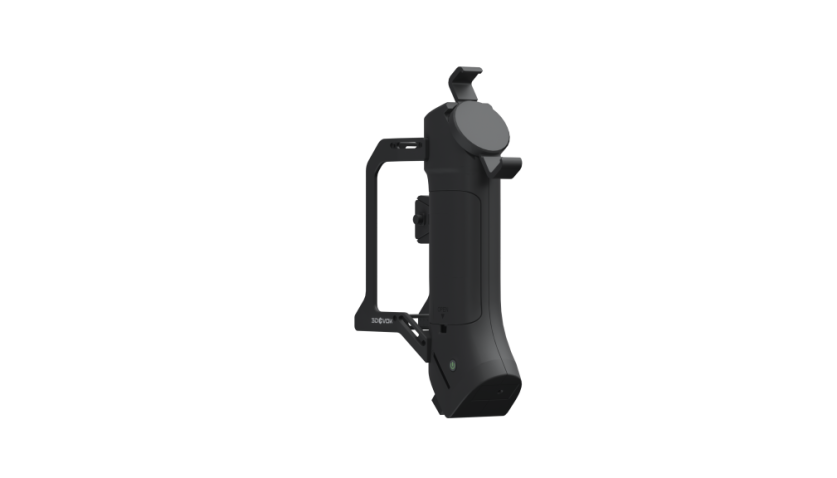Digitally Reviving Ancient Egypt: 3DeVOK 3D Scanner Supports the China-Egypt Joint Archaeological Project
06/17/25
Beneath the golden sands of Saqqara,south of Cairo, lies a vast necropolis that once served the ancient capital of Memphis. This sacred burial ground has witnessed the rise and fall of pharaonic dynasties. In recent years, a series of groundbreaking discoveries—mummified remains, painted coffins, and exquisitely crafted statues—has once again turned global attention to this legendary site. In 2020, Saqqara was named one of the world’s top ten archaeological finds, reigniting scholarly and public interest alike.
Against this backdrop, the China-Egypt Saqqara Newly Unearthed Relics Digital Research Project was launched, marking a new chapter in bilateral cooperation on cultural heritage preservation. The project team conducted digital scanning, photography, documentation, and research on over a thousand anthropoid wooden coffins excavated from the Bastet Temple site in North Saqqara. They also assisted in the restoration of significant artifacts, including the statue of Ramses II at the Karnak Temple in Egypt. As a key technical partner, 3DeVOK played an active role in the project’s digital preservation efforts.
3DeVOK MT Professional 3D Scanner: Empowering Digital Heritage Preservation
3DeVOK MT portable 3D scanner played a vital role in digital documentation and detail capture on site. Equipped with a multi-light-source system, this scanner offers an accuracy of up to 0.04 mm and a resolution of 0.05 mm, enabling efficient, non-contact scanning of fragile artifacts—all without markers.
At two newly excavated pyramid sites, the 3DeVOK MT color 3d scanner was used to capture high-resolution digital replicas of important monuments, including a pink granite false door, a black granite statue, and multiple anthropoid wooden coffins. With its robust hybrid alignment system and large scanning area, the MT handled diverse materials ranging from porous wood to polished stone under real-world field conditions.
Ultra-HD Microwear Analysis: Revealing What the Eye Cannot See
In this archaeological project, this high precision 3D scanner introduced high-definition (HD) and microwear analysis technologies to Egyptian field archaeology for the first time. This advancement enabled researchers to capture not only the overall geometry of artifacts but also microscopic features such as pigment stratification, engraving depth, and wear marks—offering deeper insights into the historical context and craftsmanship behind each relic.
Moreover, compared to traditional monochrome scanning, the color 3D scanning supported by the MT not only reconstructs the geometry of cultural artifacts but also faithfully captures surface textures, colors, and weathering patterns. All scanned data is transmitted to the accompanying 3D scanning software for real-time visualization.
This provides a more complete and authentic digital foundation for subsequent cultural research and restoration work. In processes such as analyzing painted relics, matching fragments, and reconstructing historical appearances, color scan data significantly enhances identification efficiency and diagnostic accuracy.
A Digital Bridge Between Civilizations
Throughout the scanning process, the team followed a strict non-contact protocol using only eye-safe light sources to prevent any photochemical damage to centuries-old pigments and delicate surfaces. This was especially critical when scanning the fragile wooden coffins and their painted decorations, where any physical interference could lead to irreversible loss.
Beyond the technology itself, this China-Egypt collaboration carries profound cultural significance. The high-precision models generated by the 3DeVOK MT handheld 3d scanner will be included in a globally accessible database, enabling scholars in archaeology, history, materials science, and related fields to conduct in-depth research. This not only advances global understanding of ancient Egyptian civilization but also highlights the contributions of Chinese technological innovation to the preservation of world heritage.
Conclusion
From digital documentation to scholarly research, from virtual restoration to cultural dialogue—3DeVOK’s advanced 3D scanning technology is reshaping how we understand and preserve the past. With its precision tools and non-invasive workflow, archaeology is evolving from excavation to digital stewardship.
Through this milestone collaboration between China and Egypt, 3DeVOK is honored to contribute to a shared global effort to safeguard ancient legacies and bring history back to life—one scan at a time.
Related Articles
View Our Product


